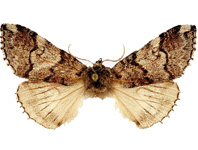Abstract
Science carried out in South America has experienced a major rise in the levels of productivity and impact during the last decade. The continuity of this process depends upon strong policy decisions of personnel training and of increasing investments. We study the effects of a new regional paradigm, specifically, an increasing international visibility through knowledge support, using the particular case of taxonomy of an ancient group of insects (Ephemeroptera) in South America. We tracked the number of new species described in scholarly papers along a period of two centuries. We have also mined patterns of connections from the respective co-authorship network. A quantitative framework to analyze historical sequences of scientific output is also proposed. Our results point out three stages of taxonomic development: (i) a pioneering stage (1800’s–1970’s) where foreign authors coming from Europe and North America account for almost the totality of described species, (ii) a transitional stage (1980’s–1990’s) where new species are described by both foreign and regional authors, and (iii) an autonomous stage (1999–present) where the bulk of scientific output is performed by regional authors. Remarkably, the transitional stage coincides with the advent of democracy in the region. We hypothesize that conjunction of funding and interactions between researchers act synergistically to foster an autochthonous taxonomy in South America.

